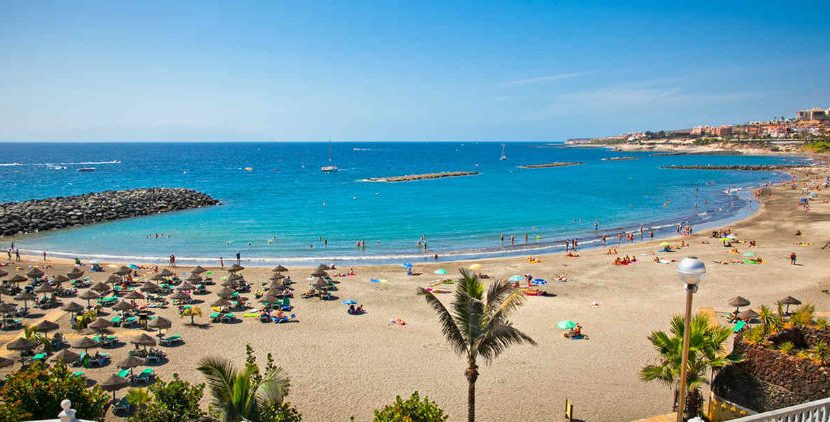In 2017 more than 2.5 million adult visitors came to the Canary Islands accompanied by almost 2 million children under 15 years of age and their turnover reached 2,519 million euros, 86.4% more than in 2010. The number of tourists with children has grown 68% in seven years.
The Canary Islands consolidates as a family tourism destination: the number of visitors with children who choose the Islands to enjoy their holidays increased by 68% between 2010 and 2017. The archipelago’s hotel and leisure offer attracted last year to 2,569,980 adult tourists who traveled accompanied by almost 2 million children under 15 years (1,992,847), while in 2010 this figure was 1,528,248 visitors accompanied by 1,480,762 children, according to the data offered by Promotur Turismo de Canary Islands, dependent on the Ministry of Tourism, Culture and Sports of the Government of the Canary Islands.
In addition, the annual turnover in the Canary Islands of these tourists amounted to 2,519 million euros in 2017, while in 2010 it was 1,351 million, so the increase was 86.4% in this seven-year period.
As it happens with all the visitors who enjoy their holidays in the Canary Islands, the good weather and the sun are the fundamental reasons for the choice of destination: up to 91.5% visit any of the islands seeking to get away from the cold or of extreme heat. In addition, virtues such as rest and tranquility, as well as a wide complementary offer aimed at the discovery and enjoyment of each of the island destinations are essential to opt for the Archipelago.
In fact, 35.8% choose the Canary Islands by the beaches, many of them with safety conditions that provide a plus for those who travel with children (lifeguard stations, for example) or with complementary leisure elements that add comfort and fun. Considering the archipelago as an adequate space for minors is another of the most valued points in their choice, with 34.7%. Tranquility and rest is important for 28%, followed by the beauty and uniqueness of its landscapes (17.6%), the possibility of knowing new places (13.6%), the price (12%) and safety (10.5%).
It should be noted that investment in leisure is more relevant in this type of visitors, as they contract more organized excursions, 22% compared to 17.7% of the rest, and more activities for fun, with 16.7% compared to 8.4% of the average.
The Minister of Tourism, Culture and Sports, Isaac Castellano, points out that it is precisely “the segmentation of customers that has contributed in good part to the tourism leadership achieved in recent years by the Canary Islands destination, a leadership in which has influenced much the great quality of the hotel and leisure offer that the Archipelago offers and in which the good harmony between the public administrations and the private sector is evident “.
In addition, Castellano emphasizes promotional actions “that consolidate the essence of the Canary Islands brand while addressing the motivations and interests of customer segments, a strategy that accounts for more than 50% of the budget of the Ministry of Tourism, Culture and Sports, through Promotur Turismo de Canarias, destines to the tourist promotion “.
Positive assessment of the destination Canary Islands
76.5% of tourists accompanied by children are repeaters and 11% have become true lovers of the Canary Islands, where they have been more than ten times. The impression they get from their trip is good or very good in 94.5% of the cases, and the score they give to the destination is 8.98 out of 10.
In 2017, Tenerife was the most chosen island for tourists with children, with 39.8% of the total, followed by Gran Canaria, with 23.6%; Lanzarote with 20.3%; Fuerteventura with 15% and, finally, La Palma with 1%.
In terms of accommodation, most opt for hotels or 4-star aparthotels, with 38.4%, being very important also the weight of non-hotel accommodation, with 34.6%.
The profile of the visitor that is accompanied by children varies, although it highlights above all the couple with children, which represents 64%, while the rest corresponds to other varied combinations (adults alone with minor children, grandparents and other relatives with children ).
Regarding the professional occupation of these tourists, the majority are salaried employees with high and medium positions (41.7%), followed by entrepreneurs and self-employed workers (33.4%). Visitors with children who arrived in the Canary Islands last year came mostly from the United Kingdom (39.7%), Germany (13.3%) and the Peninsula (11%).
Courtesy of El Digital Sur



